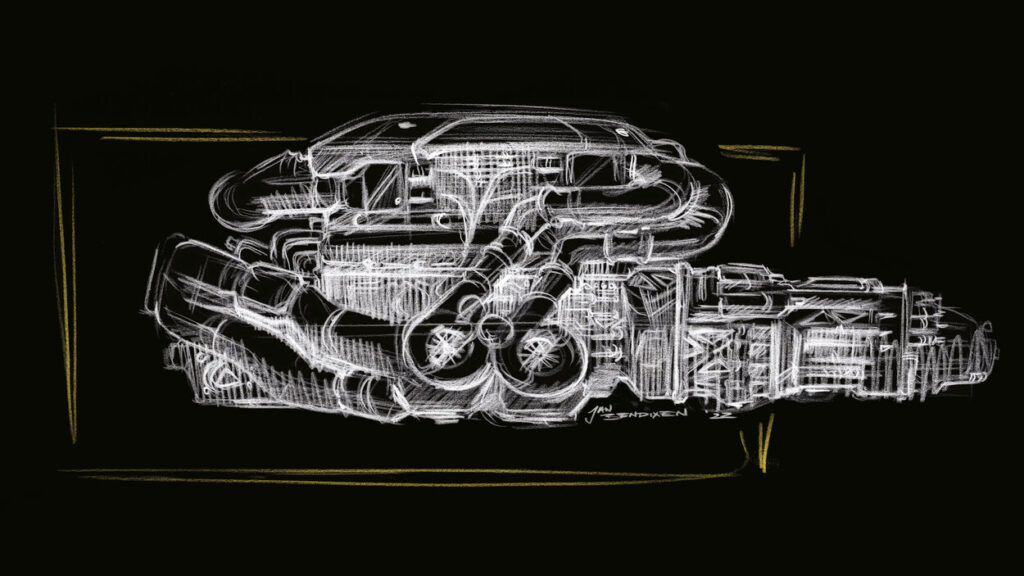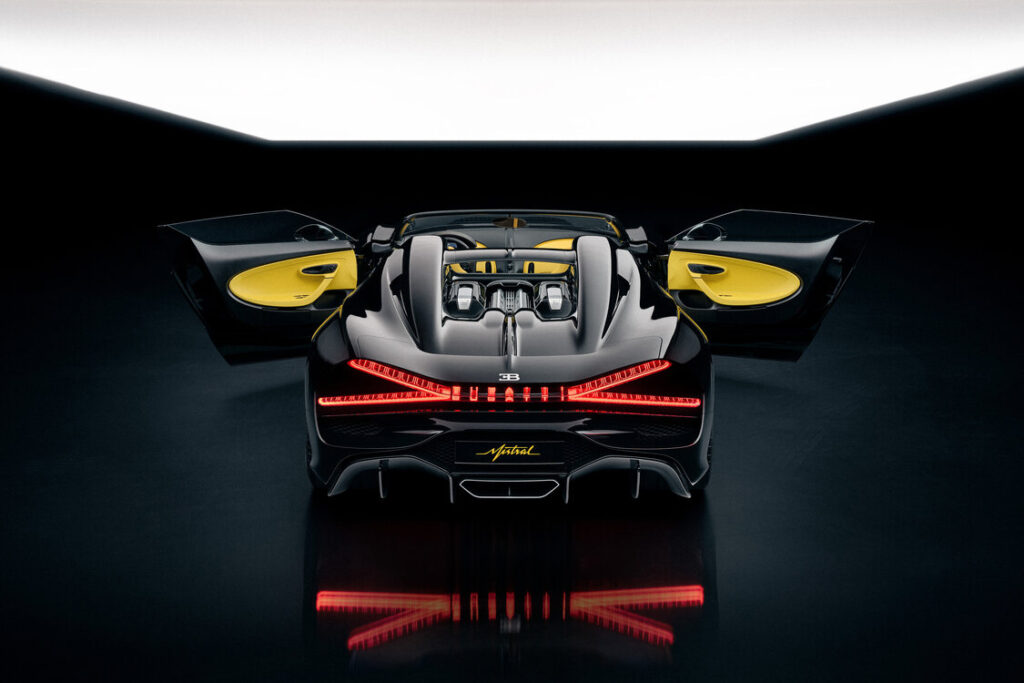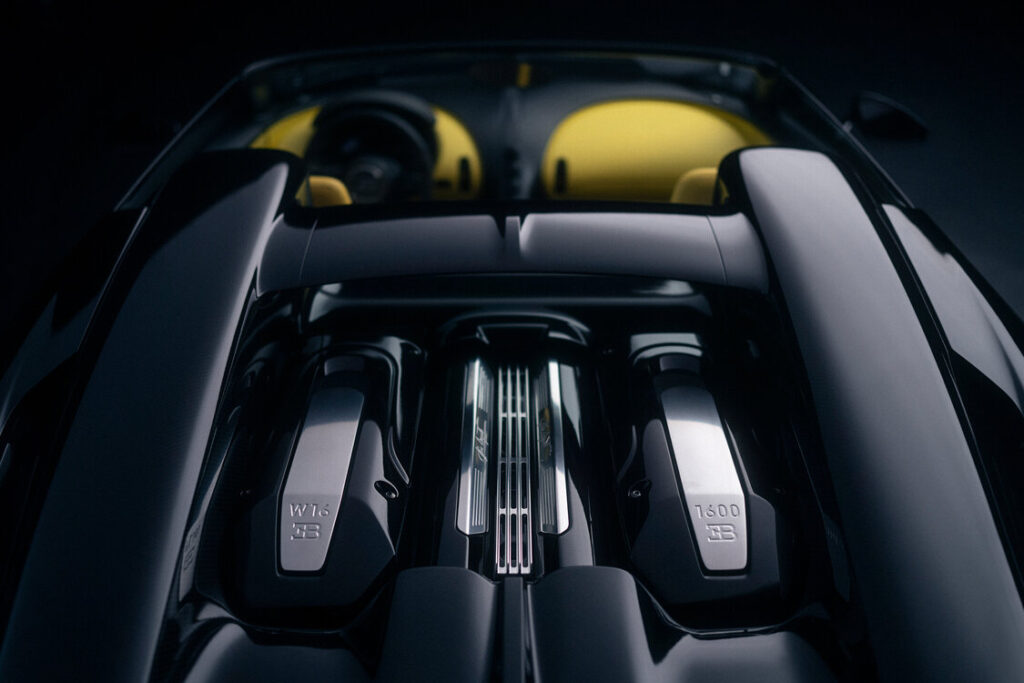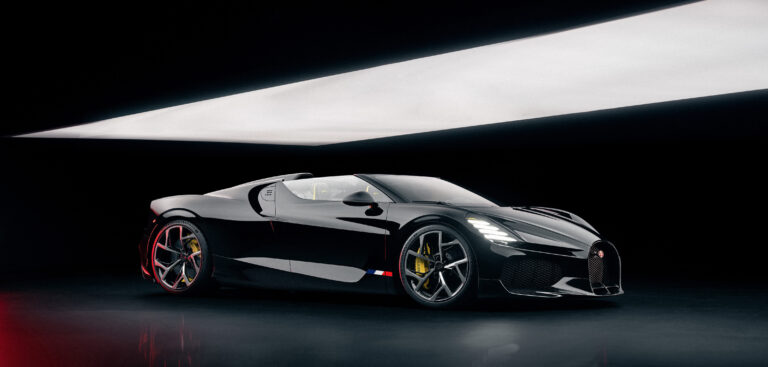The W16 is set to make its last road-going appearance in Bugatti’s upcoming Mistral roadster model.
“Managing both thermodynamics and aerodynamics effectively is key to achieving more than 420km/h in an open-top car, even with 1,600ps from perhaps the most advanced automotive engine ever created,” explained Emilio Scervo, chief technology officer at Bugatti Rimac. “We have to think very carefully about how we shape the W16 Mistral to guide air through the car and around the car to delicately balance both cooling and aerodynamics.”
Situated at the front of the W16 Mistral is Bugatti’s well-known horseshoe grille, which is now wider, deeper and more three-dimensional. This enables the high-temperature engine radiator to be fed entirely by one intake, with the two side intakes dealing only with air flow to the vehicle’s intercoolers.
“The frontal appearance of the car is dominated by these large intakes, and while recognizably Bugatti, we take a number of cues from the few-off models: Divo, Centodieci and La Voiture Noire,” said Achim Anscheidt, design director at Bugatti Rimac.
To incorporate a reinvented Bugatti C-line, a design cue that marked the profile of the Chiron and is now part of the W16 Mistral’s new look, engineers had to move several engine components.

“To get it right, we needed to separate the air intake for the engine from the air intake for the oil cooler,” continued Anscheidt. “If we kept them together, the intake on each side of the car would have had to have been enlarged out of proportion. So, instead, we hark back to the Veyron 16.4 Vitesse and the Type 57 Roadster Grand Raid by incorporating engine air intakes behind the occupant headrests. This solution is elegant, functional and safe; the svelte side intakes are proportionally perfect and feed air purely to the oil coolers.”
All the air that is taken through the sides of the vehicle is channeled across the two radiators, one on each side. Air is then forced over the rear wheels and out through the W16 Mistral’s X-shaped rear lights. Vents are situated in the negative space between the X beams of the light and subsequently create a pressure drop between the side intakes and the outlets at the back of the car to help with engine temperature management under high loads.

“The W16 Mistral will be capable of 420km/h in Top Speed mode while still inspiring ultimate confidence in the driver,” added Scervo.
Only 99 W16 Mistrals will be produced and they will go on sale for €5m (US$5.13m). Deliveries are scheduled to begin in 2024.



